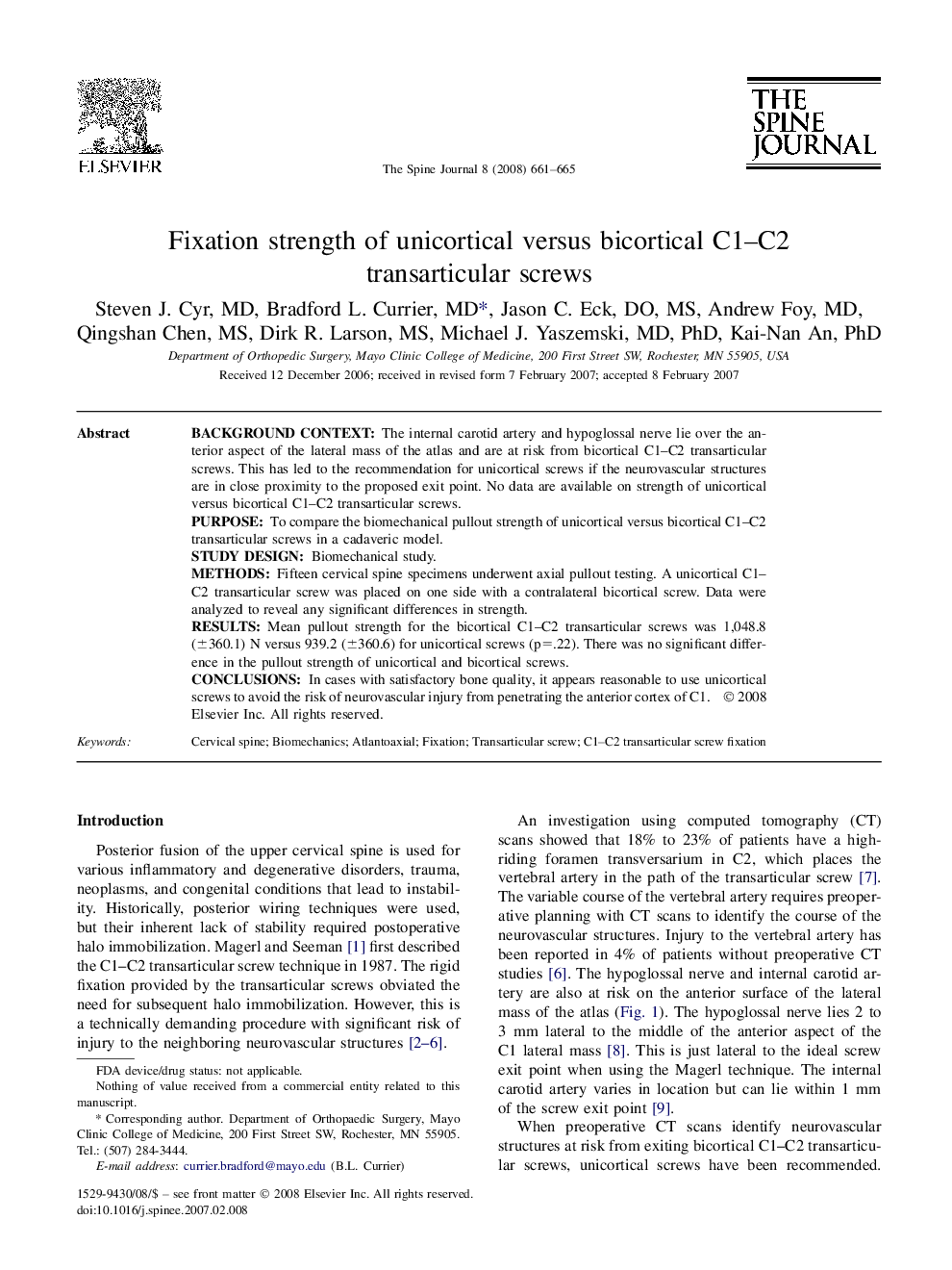| Article ID | Journal | Published Year | Pages | File Type |
|---|---|---|---|---|
| 4100193 | The Spine Journal | 2008 | 5 Pages |
Background contextThe internal carotid artery and hypoglossal nerve lie over the anterior aspect of the lateral mass of the atlas and are at risk from bicortical C1–C2 transarticular screws. This has led to the recommendation for unicortical screws if the neurovascular structures are in close proximity to the proposed exit point. No data are available on strength of unicortical versus bicortical C1–C2 transarticular screws.PurposeTo compare the biomechanical pullout strength of unicortical versus bicortical C1–C2 transarticular screws in a cadaveric model.Study designBiomechanical study.MethodsFifteen cervical spine specimens underwent axial pullout testing. A unicortical C1–C2 transarticular screw was placed on one side with a contralateral bicortical screw. Data were analyzed to reveal any significant differences in strength.ResultsMean pullout strength for the bicortical C1–C2 transarticular screws was 1,048.8 (±360.1) N versus 939.2 (±360.6) for unicortical screws (p=.22). There was no significant difference in the pullout strength of unicortical and bicortical screws.ConclusionsIn cases with satisfactory bone quality, it appears reasonable to use unicortical screws to avoid the risk of neurovascular injury from penetrating the anterior cortex of C1.
